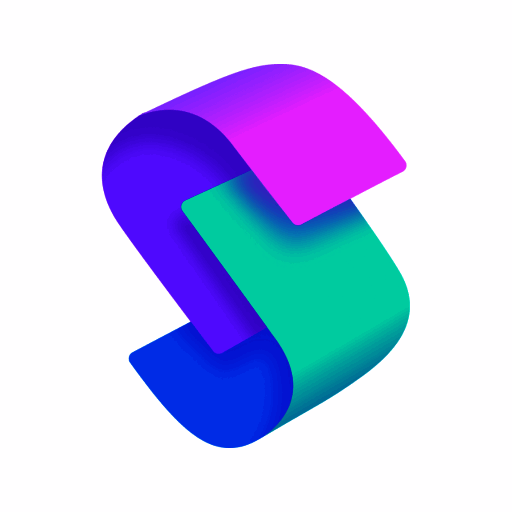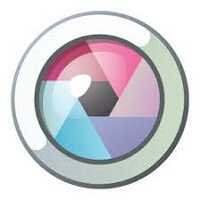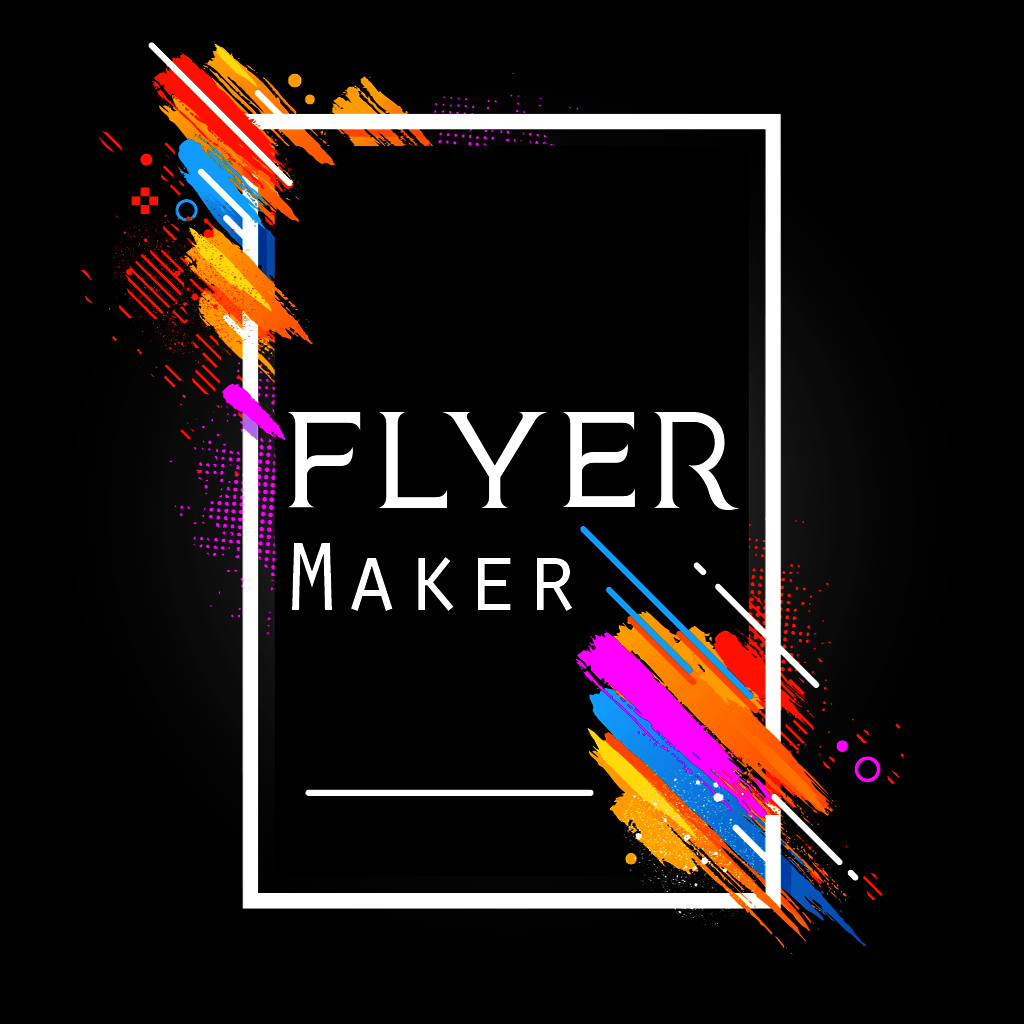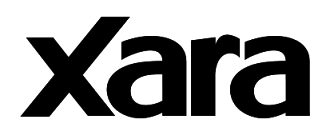What Is Graphic Design Software?
A powerful and necessary tool for any creative professional or company trying to improve their visual message is graphic design software. This kind of software is a vital tool in today's digital world since it enables users to produce, modify, and work with digital images and graphics. To put it simply, graphic design software gives designers a way to realise their concepts and communicate ideas through eye-catching graphics.
The adaptability of graphic design software is one of its primary characteristics. It provides a vast array of features and tools to meet various design requirements and tastes. This software may be used to create anything from artwork and logos to banners, brochures, and social media graphics. Because of its adaptability, it's a great option for companies trying to build a distinctive brand identity or for individuals want to express their creativity.
The user-friendly interface of graphic design software is another essential feature. Software developers have placed a high priority on developing user-friendly and intuitive interfaces as technology develops, making it simple for even novices to navigate and produce visually appealing designs. Learning how to utilise graphic design software is now easier than ever thanks to the abundance of tutorials and online resources available.
Graphic design software has the advantages of speed and efficiency in addition to being user-friendly. Making alterations or repairs to traditional hand-drawn drawings can be difficult and time-consuming. However, modifying and refining drawings is a quick and easy procedure when using graphic design tools. Businesses who need to update their marketing materials frequently or people who are pressed for time but still need to provide eye-catching graphics will particularly benefit from this capability.
Additionally, throughout time, graphic design software has developed to incorporate cutting-edge features including collaborative tools, 3D design capabilities, and AI-powered design recommendations. These characteristics make the program a vital resource for companies with dispersed or remote teams since they not only improve the calibre and effectiveness of design work but also encourage teamwork.
What Are The Recent Trends In Graphic Design Software?
Graphic design is one of the fields that keeps evolving along with technology. Numerous fascinating trends in the field of graphic design software have emerged in recent years. In addition to making design simpler and more effective, these advancements have created new opportunities for producing beautiful and inventive designs.
Let's examine some of the most significant developments in graphic design software that consumers should be aware of.
1. Augmented And Virtual Reality: The combination of virtual and augmented reality is one of the most innovative developments in graphic design software. Designers may now produce immersive and interactive experiences for their consumers thanks to the development of VR and AR technologies. With the use of graphic design tools, designers may create 3D models and designs that can be viewed and worked with in virtual or augmented reality, opening up new possibilities for experimentation and innovation.
2. Artificial Intelligence: In several areas, including graphic design, artificial intelligence (AI) has been making waves. AI has been included into a number of graphic design software systems in recent years to help designers with their work. In the end, AI algorithms can save designers time and effort by analysing data and suggesting design components like layout, colour palettes, and font selections.
3. Interfaces That Are Easy To Use: The development of user-friendly interfaces in graphic design software has made the graphic design industry more accessible to non-designers. These user-friendly interfaces make it possible for novices to produce designs that look professional with little learning curve. This movement has made graphic design more accessible and inclusive by giving people and companies without a background in design the chance to produce their own designs.
4. Features For Sharing And Collaboration: Remote work and cooperation have become commonplace in the current digital era. Many graphic design software packages now include sharing and collaboration tools to keep up with this trend. Designers may now receive feedback, collaborate on modifications, and work in real-time with clients or other team members. This promotes a more creative and cooperative work atmosphere in addition to increasing workflow and efficiency.
5. Capability For Mobile Design: The need for mobile-friendly designs has grown dramatically as smartphones and tablets are used by more people. Graphic design software has changed to incorporate features tailored to mobile design in order to keep up with this development. This enables designers to produce designs that offer a smooth user experience across a variety of devices.
Benefits Of Using Graphic Design Software
For any person or organisation wishing to produce polished and eye-catching visuals for marketing collateral, social media posts, or website design, graphic design software is an invaluable resource. It simplifies the design process while providing a wealth of tools and capabilities that enable users to realise their imaginative ideas.
We will go over the many advantages of utilising graphic design software in this buyer's guide so you can choose the best program for your requirements.
1. Creativity And Customisation: The capacity of graphic design software to foster creativity is one of its greatest benefits. Users can create distinctive and customised designs by experimenting with different elements like fonts, colours, shapes, and images using a variety of creative tools. This enables companies to differentiate themselves from the competition and establish a unique brand image.
2. Efficiency And Time-Saving: Using graphic design software can result in substantial time and effort savings when compared to traditional design approaches. Pre-made templates, grids, and other design conveniences make it simple for users to produce designs that appear professional in a much shorter amount of time. In addition to boosting output, this frees up designers to concentrate on other crucial duties.
3. Professional Quality: A basic design can be elevated to a polished and high-quality one with the help of graphic design software's many capabilities, filters, and effects. Businesses particularly benefit from this since it enables them to produce eye-catching marketing collateral that makes an impression on their target market.
4. Better Collaboration: As remote work has grown in popularity, collaboration solutions have become even more crucial. The majority of graphic design software enables real-time collaboration and cloud-based storage, enabling several team members to collaborate on the same design at once. Regardless of physical location, this facilitates effective communication and smooth teamwork.
5. Cost-Effective: Because traditional design processes entail employing a professional designer or outsourcing jobs, they can be expensive. Businesses may create internally with graphic design software, doing away with the need for outside assistance. It is a cost-effective choice for companies of all sizes because many software options also provide reasonable price plans.
6. Regular Updates: In order to enhance the user experience, graphic design software is always changing, and companies are regularly providing updates. This keeps customers' designs current and fresh by giving them continuous access to new and improved functionality.
Important Factors To Consider While Purchasing Graphic Design Software?
To make the best decision for your needs, there are a number of crucial variables to take into account when buying graphic design software. I have put together a thorough list of important factors that every consumer should take into account in my capacity as a professional content writer.
1. Features And Tools: The software's features and tools are the first and most important consideration. A variety of tools, including photo editing, sketching, typography, and vector design, should be included in the software to accommodate your unique design requirements. In order to boost your creativity and productivity, it should also offer sophisticated tools like layers, filters, and special effects.
2. User-Friendly Interface: Because it has the power to improve or ruin the design experience, a user-friendly interface is crucial, particularly for novices. Choose software with an easy-to-navigate interface that is well-structured and makes it simple for you to access and utilise the features and functions.
3. Compatibility: Verify that the software is compatible with the hardware and operating system of your machine. Certain software might only work with particular operating systems or need more processing power, which your device might not have.
4. Cost: Depending on the features and degree of usefulness, graphic design software can be anywhere from free to pricey. Before you buy the software, think about your spending limit and the value it will provide. Additionally, consider any other expenses that can impact the total cost, such as subscription fees or add-ons.
5. Customer Help: If you have any queries or run into any problems while using the product, having dependable customer help is essential. To guarantee you receive timely help when you need it, look for software with easily accessible customer service channels like live chat, email, or phone.
6. Reviews And Ratings: It is usually a good idea to study user reviews and ratings of the software before making a final decision. This will assist you in making an informed choice by providing you with a greater grasp of the software's advantages, disadvantages, and overall user experience.
7. Trial Versions: Before making a purchase, it is advisable to examine the functionality and interface of most software by using the free trial versions that are available. You will get a practical experience and be able to assess whether the software satisfies your needs. By taking into account these crucial elements, you may choose the best graphic design program to suit your requirements and price range, enabling you to quickly and easily produce beautiful designs.
What Are The Key Features To Look For In Graphic Design Software?
Knowing the critical aspects that can make or break your design process is crucial while looking for the best graphic design software. To make sure you buy the best graphic design software, consider the following features:
1. User-Friendly Interface: Any software, including graphic design software, must have an intuitive user interface. Choose software with an easy-to-use interface that makes it simple for you to explore and utilise the features.
2. Compatibility: Verify that the program is compatible with the file formats and operating system you use. To give you freedom, it should also be compatible with a variety of gadgets, like tablets and laptops.
3. Creative Tools: Your designs might be more adaptable the more creative tools a piece of software offers. Look for features like a large selection of fonts, brushes that can be customised, and different effects like filters, gradients, and layers.
4. Support For Vector Graphics: Choose software that supports vector graphics if you want to do design work at a professional level. This will enable you to produce designs that are scalable and resizable without sacrificing quality.
5. Capabilities For Picture Editing: Since many graphic design projects call for image editing, be sure the program you select offers editing features like colour correction, cropping, and scaling. A large variety of picture file types ought to be supported as well.
6. Templates And Presets: Select software that includes pre-made templates and settings to save time and effort. These can act as inspiration for your own ideas and offer you a head start in designing.
7. Collaboration And Sharing Options: Choose software that makes file sharing and collaboration simple if you work in a team. For remote teams, real-time collaboration is even possible with certain tools.
8. Cost And Scalability: Take into account both the software's scalability and your budget. While some programs have a subscription-based strategy, others provide a one-time purchase charge. Select one that can expand to meet your design needs and stays inside your budget. You may locate the ideal graphic design program that satisfies your needs and makes it easy for you to produce beautiful designs by keeping these important characteristics in mind. In order to make an informed choice, do extensive research and weigh your options before making a purchase.
Why Do Businesses Need Graphic Design Software?
These days, graphic design software is a vital tool for companies. Graphic design can have a big impact on a company's success, from making visually appealing logos and branding materials to designing marketing collateral and building a strong web presence. The significance of graphic design software and the reasons that all businesses, regardless of size, require it will be covered in this buyer's guide.
1. Branding And Identity: Establishing a distinctive and recognisable brand in the marketplace is essential for any firm. Businesses can use graphic design software to produce aesthetically pleasing and standardised branding materials, like letterheads, business cards, and logos. This aids in forging a solid brand image and leaving a lasting impact on prospective clients.
2. Professionalism: Projecting a professional image to clients and consumers is crucial in the fiercely competitive business environment of today. Businesses can increase their reputation and dependability by creating polished, professional-looking graphics with the help of graphic design software. Professional-looking visuals have a significant impact on how people view a business, from social media posts to website design.
3. Marketing And Advertising: Any business's success depends on its ability to sell and advertise effectively. Businesses may more easily produce eye-catching and captivating marketing materials like posters, flyers, and digital advertisements with the use of graphic design software. These designs might help draw in potential clients and provide crucial details about the goods or services being provided.
4. Cost-Effective: Small businesses may find it costly to hire a professional graphic designer. Businesses can save money and produce their own designs without sacrificing quality by using graphic design software. This enables companies to have greater budgetary flexibility and control over their branding and marketing initiatives.
5. Versatility: Businesses can produce a choice of designs for various uses thanks to the extensive tools and capabilities that graphic design software offers. Businesses can develop logos, flyers, social media graphics, website designs, and more using the same tools, whether they are printing or digital. This saves time and money by doing away with the requirement for various software programs. To sum up, graphic design software is a vital resource for companies trying to build a solid brand identity, stay professional, and sell goods and services successfully. Purchasing high-quality graphic design software can help firms stand out in the competitive market of today and offer a number of advantages.
How Much Time Is Required To Implement Graphic Design Software?
The intricacy of the program, the user's level of knowledge, and the quantity of features being used are some of the variables that might affect how long it takes to implement graphic design software. Complete integration and use of a new graphic design tool typically takes a few hours to many weeks. It could take longer for novices or people with little expertise to get used to the software and its capabilities.
This could entail taking the time to become familiar with the fundamentals, use the interface, and practise different design strategies. On the other hand, more seasoned users might be able to become used to the program more rapidly and integrate it into their workflow more quickly. It may also take more time and effort to properly apply certain graphic design software applications due to their steeper learning curves.
Before making a purchase, purchasers should take into account both the software's complexity and their own level of expertise. The degree of customisation required for the particular project or design might also have an impact on the implementation duration. While some projects could be easier and quicker to finish, others might need more intricate designs and take longer.
Additionally, it is important to remember that the integration process does not have to be finished all at once. As users get more accustomed to the software, they can progressively learn and use new features and functions. This can facilitate a more seamless transition and help prevent feelings of overload.
In general, buyers should take into account the program's complexity, their own degree of experience, and the particular requirements of their projects in order to guarantee a successful implementation of graphic design software. Long-term, more effective and efficient design work might result from devoting time and energy to becoming proficient with the software.
What Is The Level Of Customization Available In Graphic Design Software?
With the many customisation options provided by graphic design software, users can produce one-of-a-kind, customised graphics. Depending on the program and its intended purpose, graphic design software offers varying degrees of customisation. Nonetheless, the majority of trustworthy graphic design programs include a great deal of personalisation, allowing users total command over every element of their creations.
Changing and manipulating text, forms, and images is one of the main functions of graphic design software. This enables users to build the ideal design by modifying features like colour, size, and positioning. To further increase the customisation possibilities, some software also provides a large number of tools for making unique lines and forms. Additionally, graphic design software gives users more creative freedom by enabling them to import and utilise bespoke fonts and pictures.
Designers that wish to include distinctive aspects into their designs or maintain a constant brand image will find this function especially helpful. Additionally, users can streamline their creative process by saving their unique templates and graphics for later usage. Graphic design software provides layout and effect customisation possibilities in addition to design aspects.
To get the desired style, users can add filters, change the arrangement of their drawings, and apply effects like gradients and shadows. This degree of personalisation enables designers to produce dynamic, eye-catching designs that are distinctive. All things considered, graphic design software offers a great degree of customisation that opens up countless design options.
This tool enables you to release your imagination and create unique designs, regardless of your level of experience as a designer. Make careful to look over the customisation possibilities of any graphic design program before buying it to pick the one that best fits your demands and aesthetic.
Which Industries Can Benefit The Most From Graphic Design Software?
For companies in many different industries, graphic design software is an essential tool. This program has the power to significantly improve visual marketing and branding initiatives because to its sophisticated capabilities and intuitive UI. However, it's crucial to know which businesses stand to gain the most from graphic design software before investing in one.
1. Advertising And Marketing: To produce visually appealing and compelling campaign materials, the advertising and marketing sector mostly depends on graphic design. Graphic design software is an essential tool for producing visually appealing and powerful marketing, from packaging and logo designs to digital ads and social media graphics.
2. Print And Publishing: To produce layouts and graphics for periodicals, newspapers, books, and other print products, the print and publishing sector makes extensive use of graphic design software. The software is a vital tool for creating high-quality print materials because of its accurate editing and layout features.
3. Web Design And Development: In the current digital era, companies need an eye-catching and easy-to-use website in order to draw in and keep clients. With the use of graphic design software, web designers may produce aesthetically beautiful and functional user interfaces and websites.
4. Architecture And Interior Design: The fields of architecture and interior design heavily rely on graphic design tools. Designers may produce accurate and comprehensive visualisations of their projects using its 3D modelling capabilities, which helps clients visualise the end product.
5. Fashion And Garment: Graphic design software is crucial to the fashion and garment sector, from developing patterns and designs to seeing the finished item. Designers may easily adapt their ideas onto digital platforms because to its robust drawing and editing tools. Apart from these areas, graphic design software also helps other industries including healthcare, entertainment, and education.
Conclusion
In conclusion, you may significantly improve your creative process and productivity by choosing the best graphic design software for your requirements. Finding software that meets your specific demands and enables you to create beautiful designs requires careful consideration of your budget, design requirements, and desired features. Consider the software's ease of use and learning curve, its variety of design, editing, and exporting tools, and its compatibility with your hardware and operating system while choosing.
Investigating the company's reputation and customer service is also worthwhile. In the end, purchasing top-notch graphic design software will help you create better designs, streamline your workflow, and enjoy graphic design more. The creative possibilities are limitless if you have access to the appropriate software. In order to assist you in making an informed choice, we hope that this buyer's guide has offered insightful advice. Have fun with your design!






















